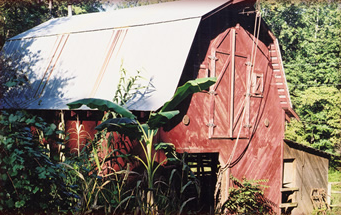
The Process
Two Suns is not a commercial foundry. I cast my own art work and occasionally a piece for a
friend but really only do several castings a year.
To have sculpted work commercially produced in bronze can be quiet an expensive endeavor. This was one
of the main reasons that I chose to pursue doing all of the stages myself. It did not take me long
though to realize why the decision meant so much more. To have a through and complete understanding and
working knowledge of the craft makes one have a stronger connection to the finished work, thus helping
to bridge into new works what I consider to be a seminal relationship between art and craft.
 I began this endeavor by building most of my foundry equipment. Items such as a cart kiln, furnace and
I began this endeavor by building most of my foundry equipment. Items such as a cart kiln, furnace and
casting tools. I gathered most of the information required from books.
The process of creating bronze sculptures has changed little since early times. Bronze alloys have been
used by humans since pre-history. The ancient Egyptians and Chinese both excelled in its use. Bronze
can be casted to any shape or size and is very durable both inside and out.
The process that is used the most for art casting is referred to as the lost wax method. In this
indirect process to making sculpture we utilize molds in order to reach the final goal vs. the direct
approach to creating art in which you work directly into the final medium such as wood or stone.
The first step in the process is to create the original. This is your inspiration and the work that you
wish to have made into bronze. And remember, be careful you'll have to look at it for a long time,
because bronze has a shelf life of fifty thousand years. This original is usually modeled in clay but
any medium can be used. We will refer to this original as the positive.
The next step is to make a rubber mold of the positive and a hard shell of fiberglass or plaster to hold
the rubber in place so that in will not distort. This mold gives us a negative image of the original
positive.
Into this rubber mold we will paint liquid wax. When the wax hardens it will readily release from the
rubber. This will give us a positive in wax.
At this point the wax will be refined and made to look as we would like for the finished bronze to look,
in hopes of getting a good casting.
A wax spru system is then attached to the finished wax. This is a series of wax bars that allow the
metal to flow to the sculpture when the wax is melted out.
The entire wax positive and spru system is then coated with layers of a ceramic slurry, allowing each
layer to dry between coats. This slurry when dry can withstand intense extremes of temperature change.
The walls of the ceramic mold are built up to the proper thickness, this depends on the size of the
sculpture. Large bronzes are casted hollow. This is done by making the wax hollow and using core pins
to connect the inside and outside of the ceramic.
At this time, the ceramic mold, with the wax inside is placed into a hot kiln, thus allowing the wax to
melt out and be recaptured. This leaves us with a hard shell ceramic mold which holds inside a negative
of the original art piece.
The bronze is then melted and poured into the pre-heated ceramic mold.
Large pieces will be welded together and chased and ground to an acceptable metal surface. Smaller
sculptures will have any imperfections welded and finished.
Surface finishing on bronze is wide open. It can be polished, or colored by many techniques. Usually,
the best patinas and the most durable ones are etched into the surface with heat.
Bronze is very luminous and lucid in its effect making it an excellent medium for art.